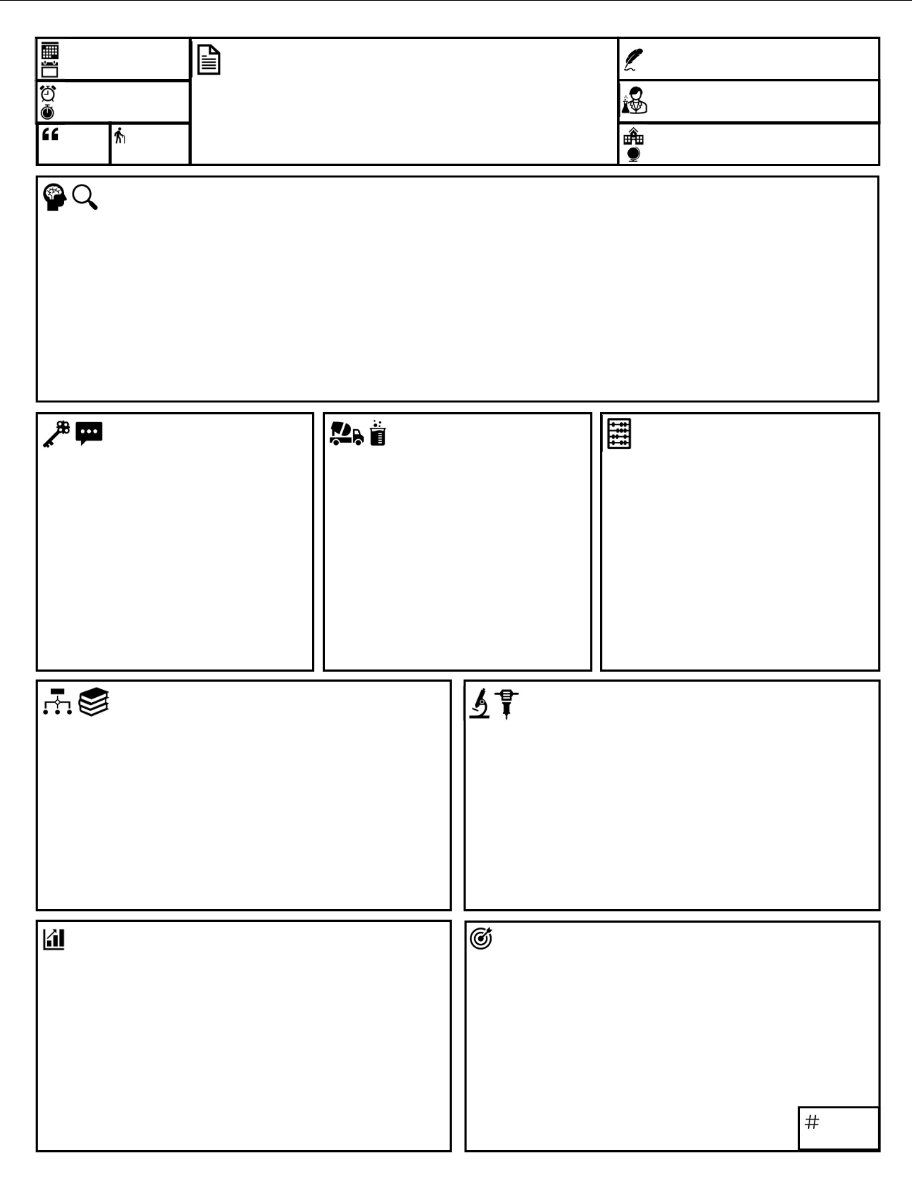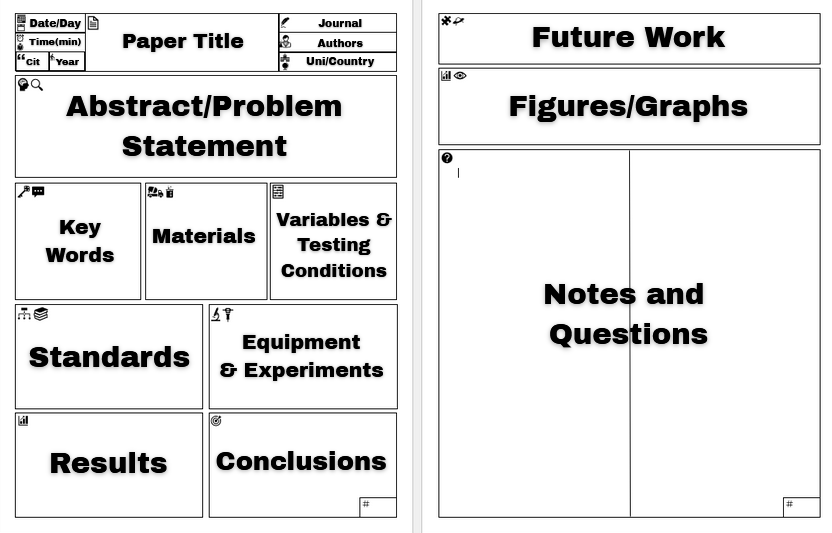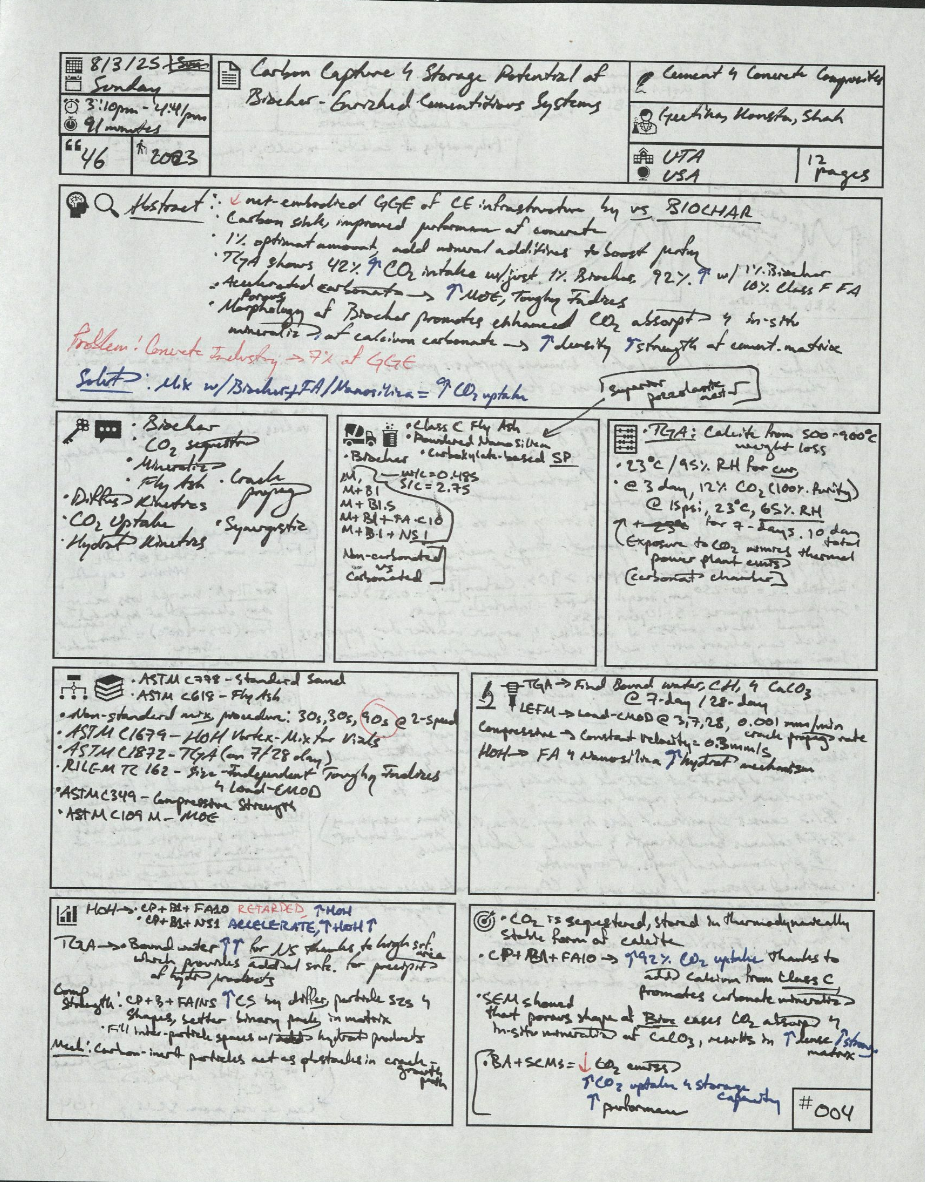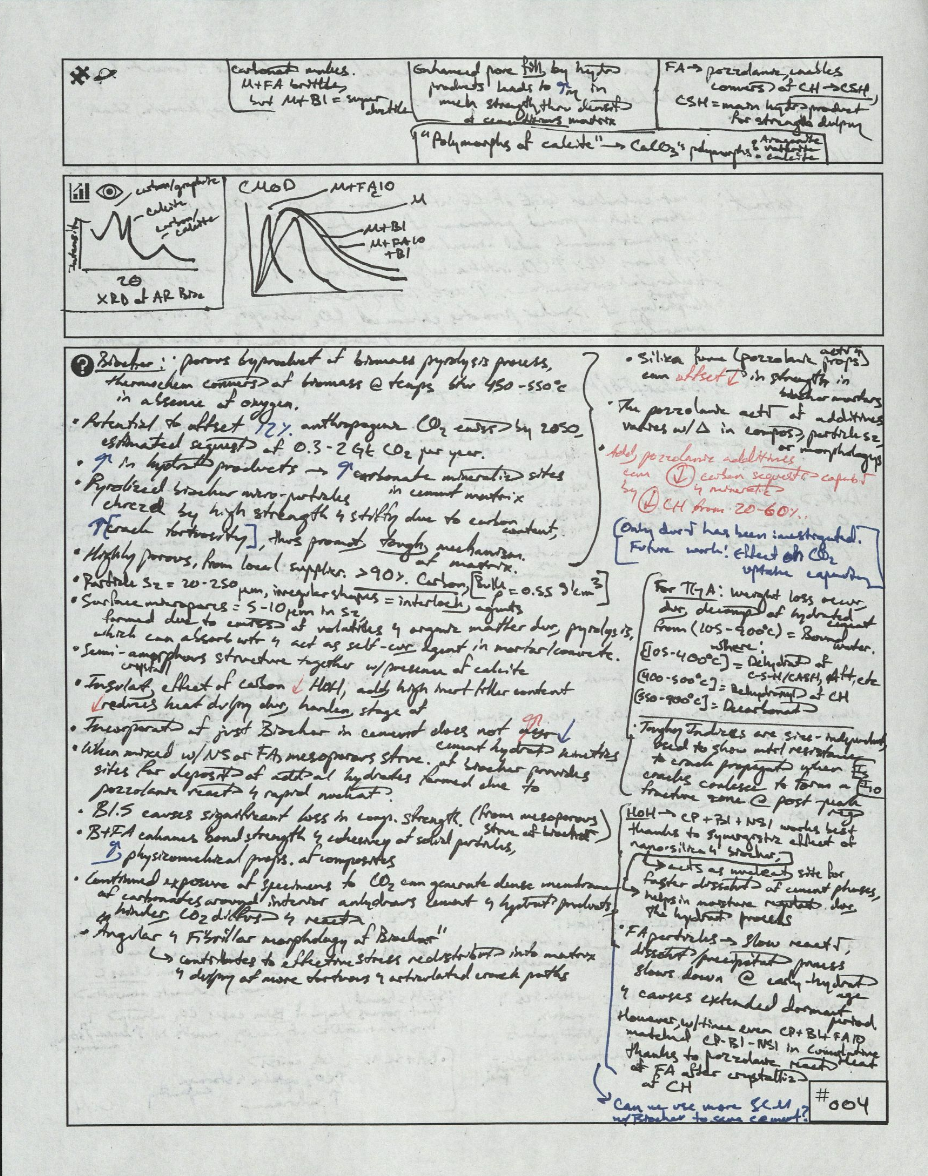
Research Paper Fill-In Template — How to Use It
🧩 Template Explained
This labeled version shows what each section of the template is for —
from metadata and methods to results and reflections.

🖋 Example Pages


🧠 What It Is
The Research Paper Fill-In Template is designed for fast, structured paper summaries that make your literature review searchable, comparable, and visually memorable.
Each box has a purpose — to help you extract only what matters from a paper, and to recognize patterns between different studies at a glance.
🧩 Template Overview
Each page is structured around information density and visual segmentation — so every field contributes to a quick mental snapshot of the study.
🏷 Header Section
- Date & Session Info: When and how long you read the paper.
- Paper ID: Your own indexing number (e.g.,
#046,2023). - Title & Authors: Copy exactly or abbreviate.
- Institution / Country / Page Count: Adds quick bibliographic context.
📜 Abstract Box
A short bullet-point summary of the core claim and key findings.
Use two colors: black/blue for neutral content, red for limitations or errors.
❓Problem / 💡Solution
Summarize the research gap and its proposed fix in one short line each.
Think of these as your elevator pitch for the paper.
⚙️ Procedures and Testing
Condense methods (e.g., “TGA 5–800 °C, XRD 5°/min”) into shorthand notations.
Boxes include:
- Materials and Mix Designs
- Testing Methods / Equipment
- Variables (independent & dependent)
- Key Standards (ASTM / ISO)
📈 Results & Figures
Sketch or annotate key graphs.
Use icons to denote techniques — e.g., 🧪 TGA, ⚡ XRD, 📊 HOH, 🧱 Strength.
🧩 Takeaways
List the three to five insights or implications you want to remember.
For example:
- Biochar increases Ca(OH)₂ conversion by 9%.
- FA + SEM synergizes → CO₂ uptake ↑.
- Retardation at low w/b but early strength recovery.
🧭 How to Use It
- Print a stack or open in a tablet note app (GoodNotes / OneNote / iPadOS).
- Write fast — don’t polish sentences. Focus on keywords, formulas, and relationships.
- Highlight key terms:
- Blue = facts
- Red = problems
- Black = structure
- File scanned pages into your Research Paper Archive in Drive or your
Research_Logsheet. - Link each entry with a matching ID in your Google Sheet database.
💾 Download the Template
👉 Download Word Template
✍️ Why It Works
- Forces compression → you remember better.
- Visual layout activates spatial memory.
- Built for pattern recognition across many papers.
- Pairs perfectly with your Google Sheets Research Archive, allowing structured data extraction (Title, Materials, Standards, Results, etc.).